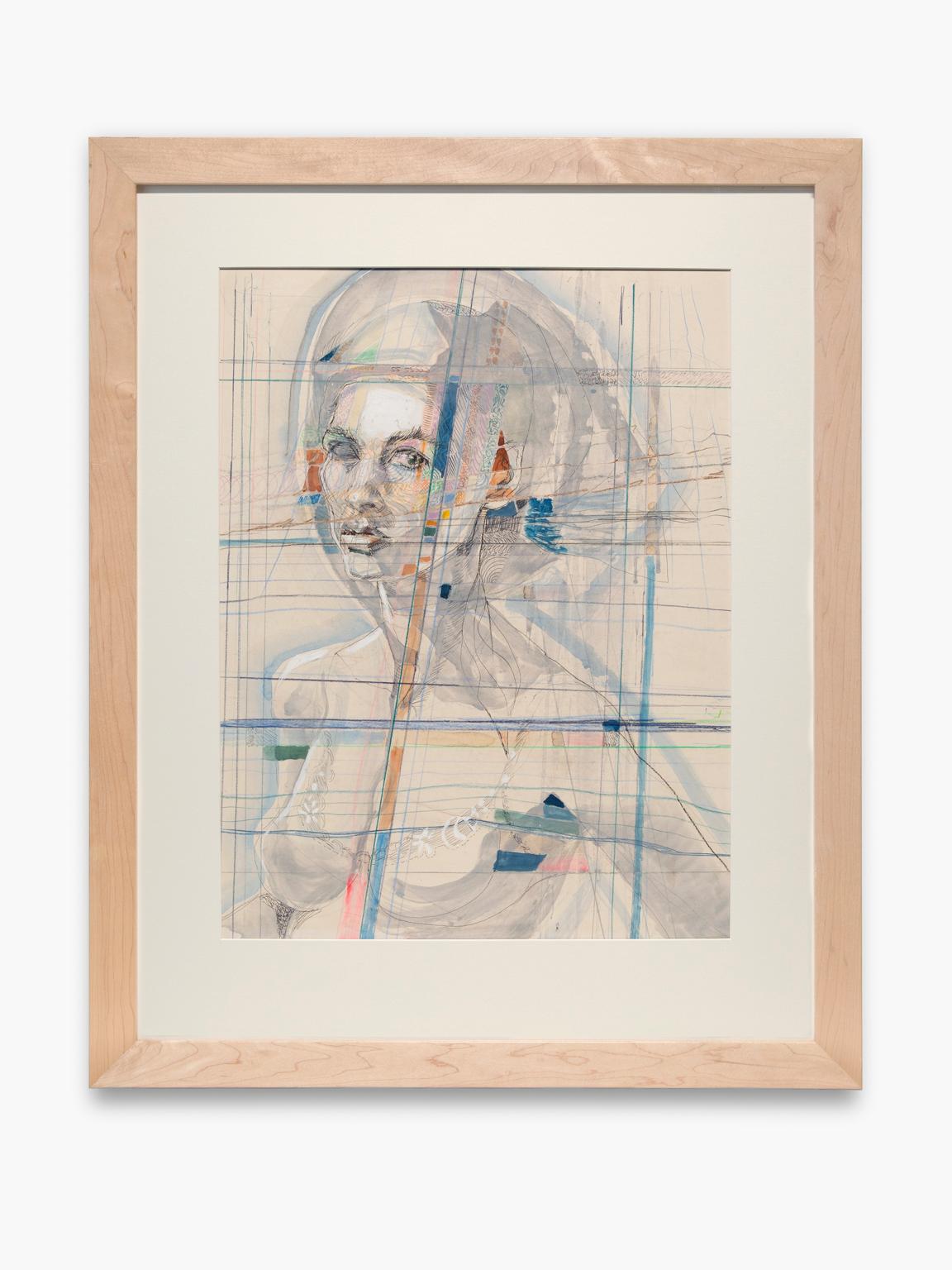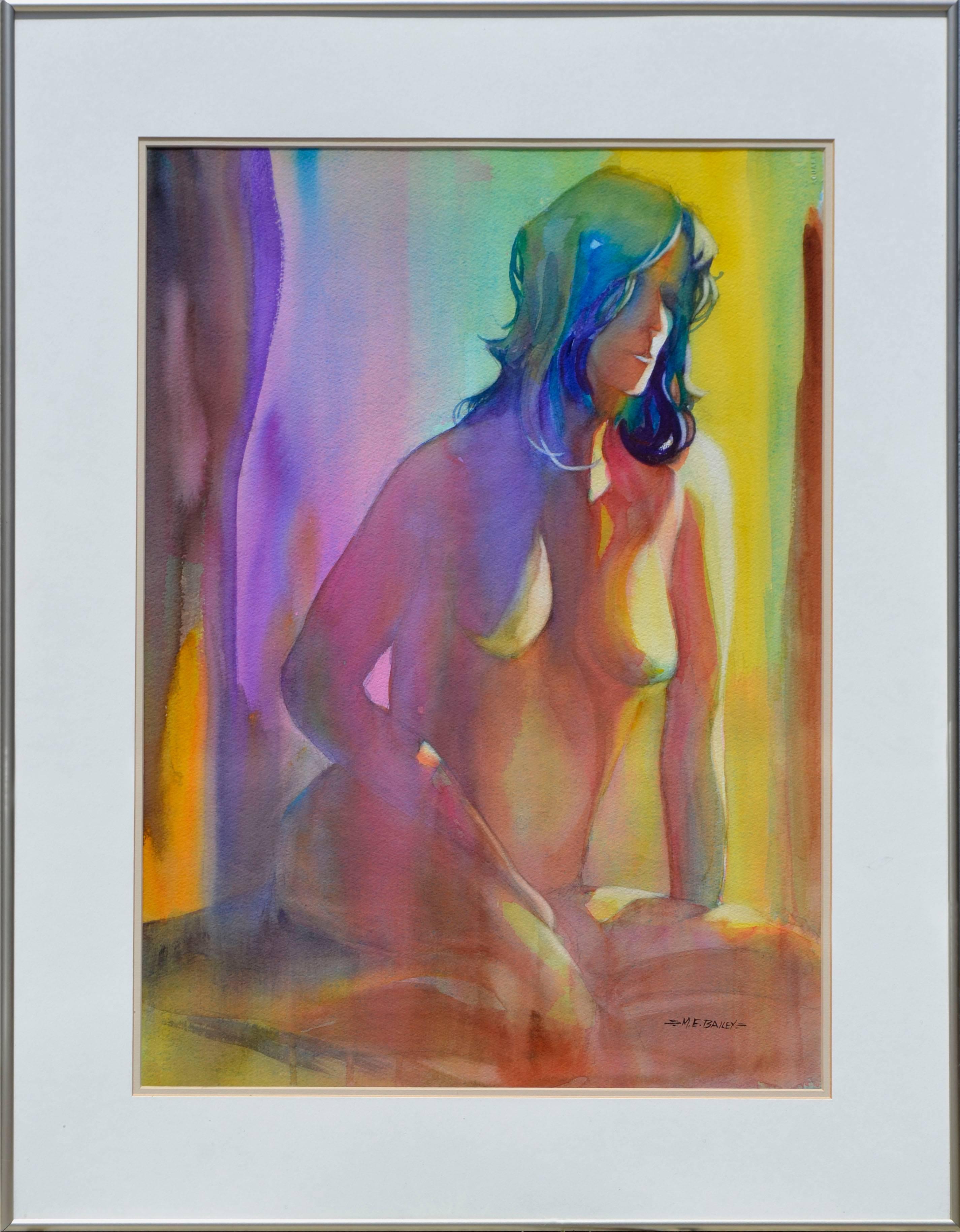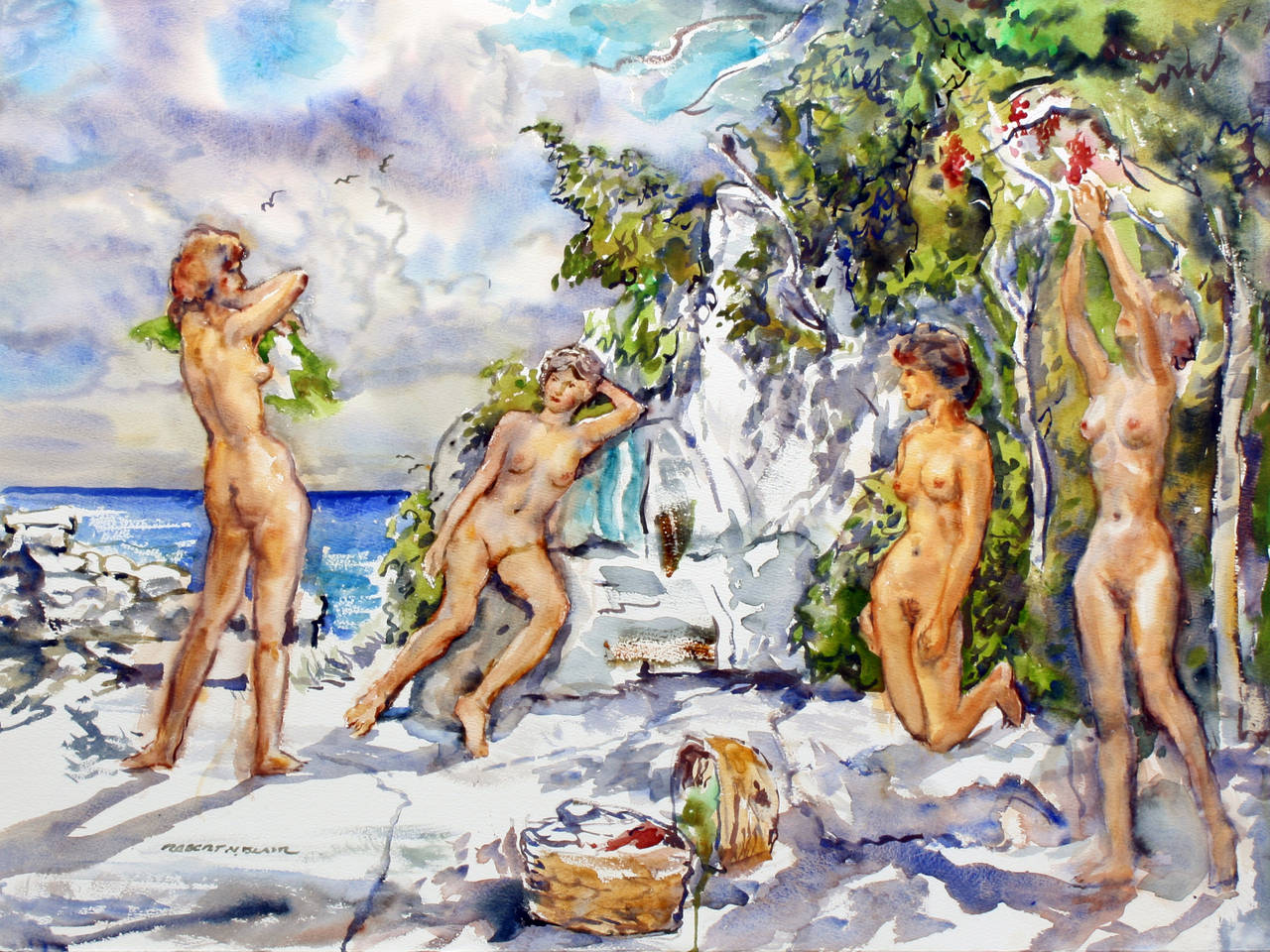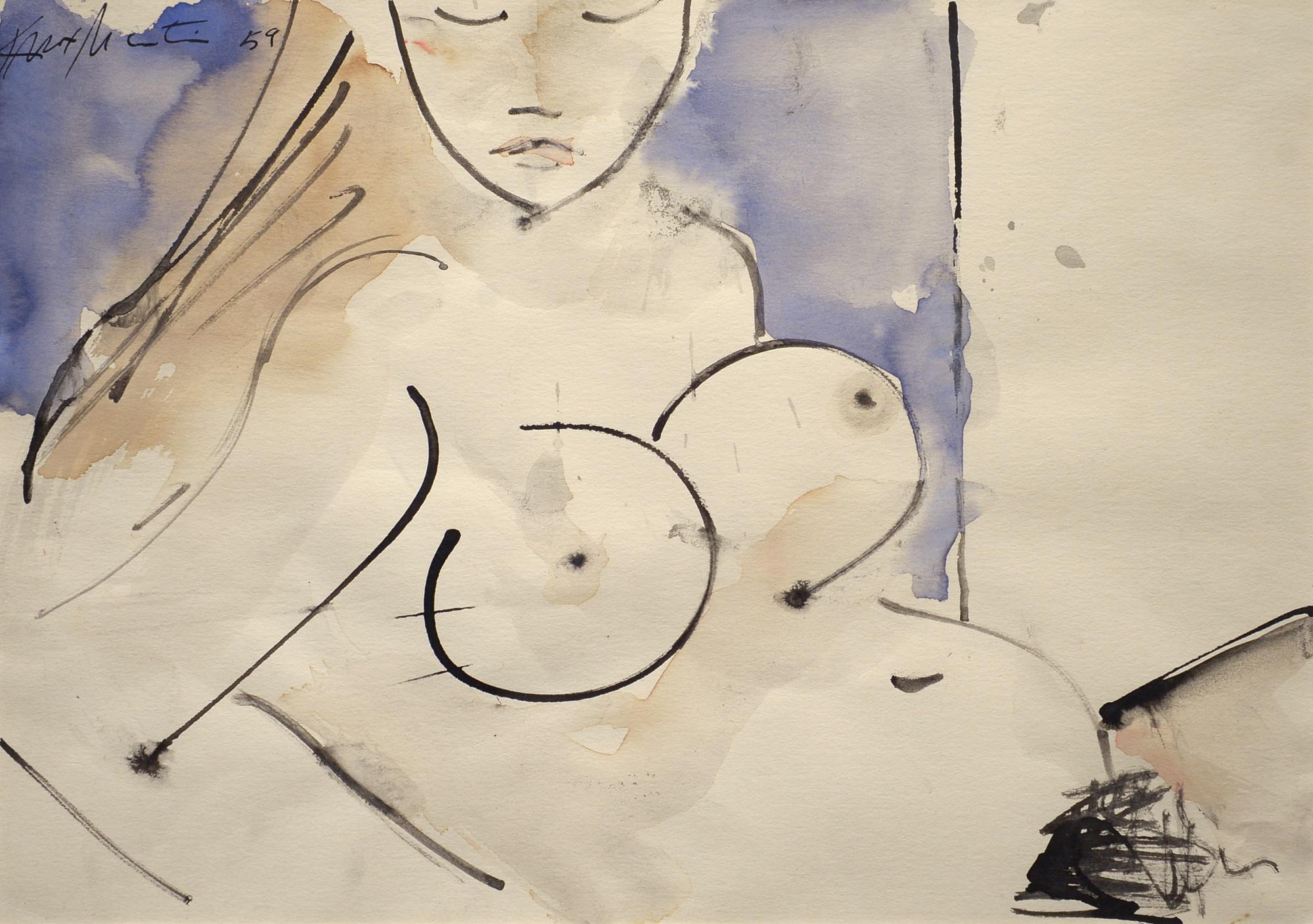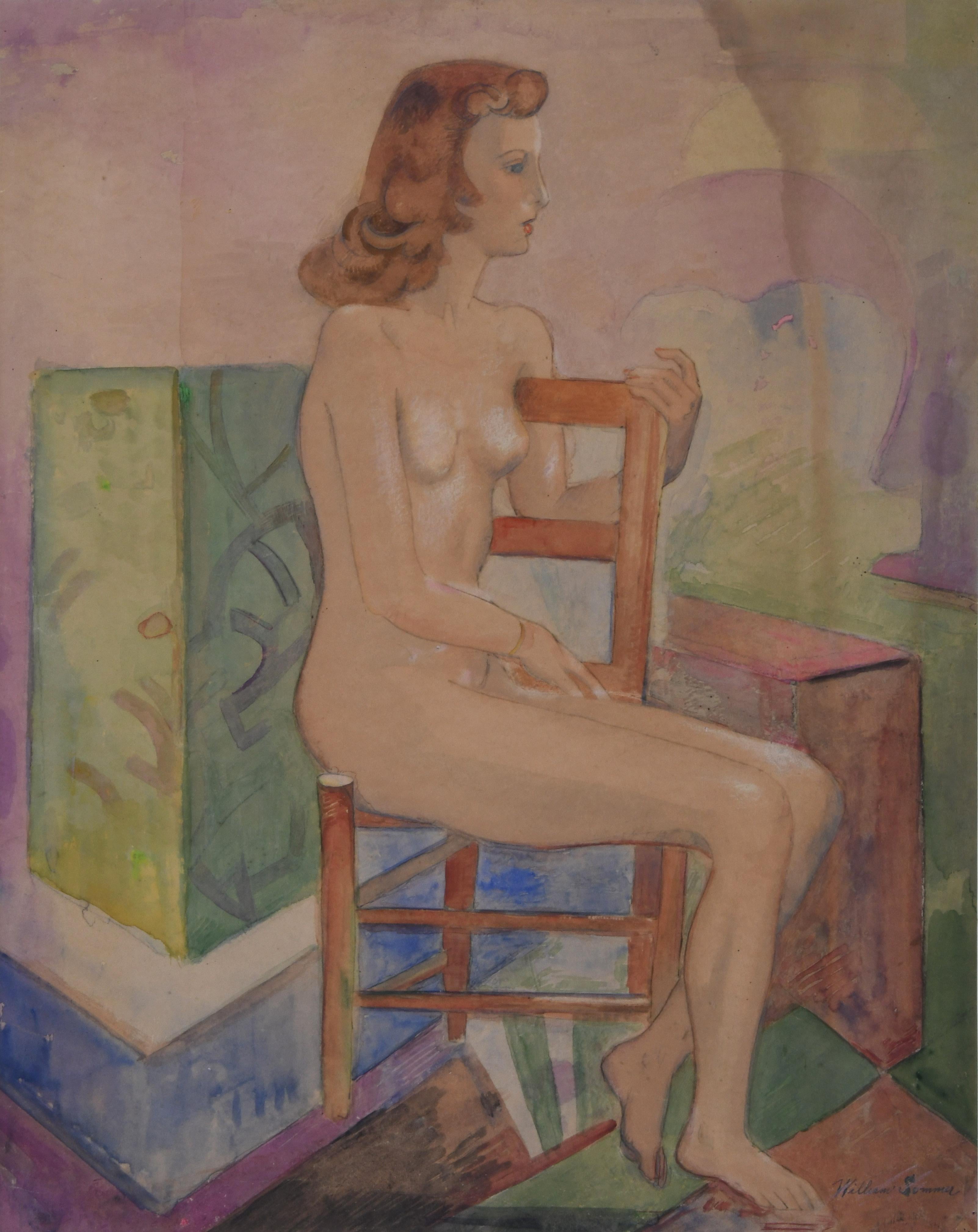Items Similar to Seated Female Nude (Devora)
Want more images or videos?
Request additional images or videos from the seller
1 of 11
Julio de DiegoSeated Female Nude (Devora)c. 1970
c. 1970
About the Item
Seated Female Nude (Devora)
Watercolor on paper, c. 1970
Signed in pencil lower right (see photo)
A folio from the artist's sketchbook. Done while the artist was in Florida.
Condition: slight staining in the upper corners
Sheet size: 11 x 14 inches
Provenance: Estate of the artist
By decent to his daughter, Kiriki
Julio de Diego (1900-1979)
Julio de Diego crafted a formidable persona within the artistic developments and political struggles of his time. The artist characterized his own work as “lyrical,” explaining, “through the years, the surrealists, the social-conscious painters and the others tried to adopt me, but I went my own way, good, bad or indifferent.” His independence manifested early in life when de Diego left his parent’s home in Madrid, Spain, in adolescence following his father’s attempts to curtail his artistic aspirations. At the age of fifteen he held his first exhibition, set up within a gambling casino. He managed to acquire an apprenticeship in a studio producing scenery for Madrid’s operas, but moved from behind the curtains to the stage, trying his hand at acting and performing as an extra in the Ballet Russes’ Petrouchka with Nijinsky. He spent several years in the Spanish army, including a six-month stretch in the Rif War of 1920 in Northern Africa. His artistic career pushed ahead as he set off for Paris and became familiar with modernism’s forays into abstraction, surrealism, and cubism.
De Diego arrived in the U.S. in 1924 and settled in Chicago two years later. The artist established himself with a commission for the decoration of two chapels in St. Gregory’s Church. He also worked in fashion illustration, designed magazine covers, and developed a popular laundry bag for the Hotel Sherman. De Diego began exhibiting through the Art Institute of Chicago in 1929, and participated in the annual Chicago Artists Exhibitions, Annual American Exhibitions, and International Water Color Exhibitions. He held a solo exhibition at the Art Institute of Chicago in the summer of 1935. Though the artist’s career was advancing, his family life had deteriorated. In 1932 his first marriage dissolved, and the couple’s young daughter Kiriki was sent to live with friend Paul Hoffman.
De Diego continued to develop his artistic vocabulary with a growing interest in Mexican art. He traveled throughout the country acquainting himself with the works of muralists such as Carlos Merida, and also began a collection of small native artifacts. While in Mexico, de Diego made a living designing costumes and scenery for ballets. His talents continued to expand as he moved into book illustration, and his work in jewelry making was incorporated into the 1946 Modern Handmade Jewelry exhibition at the Museum of Modern Art. He remarried in 1948, becoming the third husband of Gypsy Rose Lee. The following year the two joined the traveling carnival Royal American Shows. While Gypsy worked as a performer, de Diego developed a show for the carnival using surrealist murals and the performance of Freudian themes. After three years of separation, the couple divorced in Reno, Nevada, and de Diego eventually settled in California.
De Diego’s continued to impact the world of fine art as he produced interpretive representations of current events in an assortment of techniques. He notably worked in the Renaissance method of “velatura,” building up to as many as forty glazes of oil in each painting. He also commonly worked within gouache, graphite, and mixed media. The themes of his work were as broad in scope as the mediums he worked in, moving from surrealist and folk compositions to self-portraits and politically engaged subjects. In the time spent working for the Works Progress Administration, de Diego produced murals of landscapes and street scenes. Afterwards he pushed away from such brands of realism, asserting, “you can’t transfer nature to canvas, you have to re-invent it.” His paintings of current and historical subjects became constructions both of the artist’s opinion of the facts and his vision of alternate realities. He reacted to natural disasters, produced works on World War II in a manner echoing Goya’s Disasters of War, explored the theme of atomic energy, and commented on the impact of the Cold War. His 1962 Armada series paralleled the use of technology in past and present conflict and explored the notion of defeat. The works played on apocalyptic fears of the Cold War period by invoking the infamous tragedy of the Anglo-Spanish War as well as the ultimate survival of both sides. De Diego expanded his political impact beyond the exhibition of these works, and began voicing opposition to Franco and the rise of fascism. He was a strong supporter of the radical American Artist’s Congress, which spoke in opposition to censorship and the curtailing of rights in Italy and Germany. During these years de Diego also became a teacher and took up positions at the University of Denver and the Artist Equity Workshop.
De Diego settled in the artists’ colony of Sarasota, Florida, in the late sixties and remained there until his death on August 22, 1979. Reports of his years there recounted him as an animate character who entertained with tales of past encounters with famed Surrealists Andre Breton and Max Enrst, the artist Man Ray and influential Peggy Guggenheim. De Diego continued to expand his repertoire by producing the educational film Julio de Diego—Painting in Egg Tempera with the help of local resident Jay Starker. Throughout his years, life and art remained codependent entities within the artist, who noted, “A painting is not what it is, but the memory that we have a life.” Julio de Diego’s works capture the sweeping vision, ambition, and passion of a curious and multifaceted artist.
- Creator:Julio de Diego (1900-1979, American)
- Creation Year:c. 1970
- Dimensions:Height: 11 in (27.94 cm)Width: 14 in (35.56 cm)
- Medium:
- Movement & Style:
- Period:
- Condition:
- Gallery Location:Fairlawn, OH
- Reference Number:
About the Seller
5.0
Recognized Seller
These prestigious sellers are industry leaders and represent the highest echelon for item quality and design.
Platinum Seller
These expertly vetted sellers are 1stDibs' most experienced sellers and are rated highest by our customers.
Established in 1978
1stDibs seller since 2013
711 sales on 1stDibs
Typical response time: 1 hour
Associations
International Fine Print Dealers Association
- ShippingRetrieving quote...Ships From: Fairlawn, OH
- Return PolicyA return for this item may be initiated within 10 days of delivery.
More From This SellerView All
- Nude Woman in ChairBy William SommerLocated in Fairlawn, OHNude Woman in Chair Watercolor, gouache, ink, and pencil on heavy paper, c. 1930-35 Signed with the artist's Estate stamp lower right (see photo) Note: ...Category
1930s American Modern Nude Drawings and Watercolors
MaterialsWatercolor
- Divertimento I (Picasso)By Conger A. MetcalfLocated in Fairlawn, OHDivertimento I (Picasso) Graphite, color wash and oil paint on coated glossy paper, c. 1940 Signed C. Metcalf lower left (see photo) Inscribed Matisse, Picasso, C. Metcalf lower left by the artist (see photo) Condition: Irregular sheet margins Framed in a carved corner, gilt decorated frame with foliate corners. Very complimentary to the work!!! ( See photo) Oil paint transfer on verso Three small bits of masking tape along the upper margin from previous framing Colors fresh, appears to be no fading Photos available upon request Sheet/Image size: 13 x 9 1/4 inches Provenance: Private Collection, Ohio Exhibited: Childs Gallery, Boston, 2013-2023 (see label) Conger Metcalf (1914–1998) was an American painter. "He was born in Cedar Rapids, Iowa and died in Boston, Massachusetts. Metcalf began his art studies in 1932 at the Iowa Stone City Art Colony, headed by American Regionalist painter Grant Wood. Metcalf continued his studies at Coe College in Cedar Rapids with Stone City co-founder Marvin Cone...Category
1940s American Modern Nude Drawings and Watercolors
MaterialsOil
- Female Nude StudyBy William SommerLocated in Fairlawn, OHFemale Nude Study Graphite and crayon on wove paper, c. 1928 Signed with the Estate stamp "B" (see photo) Provenance: Estate of the Artist Edward Sommer (his so...Category
1920s American Modern Nude Drawings and Watercolors
MaterialsCrayon
- Reclining Female NudeBy Emil GansoLocated in Fairlawn, OHReclining Female Nude Charcoal on paper, c. 1933 Signed lower right (see photo) Provenance: Weyhe Gallery, New York (Ganso's dealer 1925-1941) Joseph Mark Erdelac, Cleveland, noted collector who had a large collection of Ganso works Ganso was born in Germany in 1895. At age 14, he apprenticed to a baker and then worked his way to America when he was 17. He worked in bakeries in Scranton, Pennsylvania; and Cincinnati and Akron, Ohio. By 1916, Ganso out of a job, and was living the life of a bohemian in New York City, sometimes on less than 30 cents a week.1 In 1921, Ganso painted a realistic nude on a bedsheet, and was forced by the police to remove it from an exhibition. The bedsheet with the painting was later stolen. He soon had a job baking again at $140 a month, and with time to spare for painting and study. Ganso quit baking in 1925 when a New York dealer gave him financial backing of $50 a week. Ganso prospered from his art after that. His work is in over 15 American museums, and the Print Club of Cleveland awarded him a $500 purchase prize for a wood engraving. A versatile artist, he painted a variety of subjects. (from a profile written by Clyde Singer...Category
1930s American Modern Nude Drawings and Watercolors
MaterialsGraphite
- Three GracesBy Ray H. FrenchLocated in Fairlawn, OHThree Graces Pentel marker on paper, 1965 Signed and dated by the artist lower left (see photo) Part of a series of 100 drawings, this number 97 (annotated lower right corner) Condition: Excellent Sheet/Image size: 20 x 15 inches Provenance: Estate of the Artist Martha A. French Trust Ray H. French: The Evolution of an Artistic Innovator Printmaker, painter, and sculptor Ray H. French was born in Terre Haute, Indiana on May 16, 1919. Terre Haute was a cultural wasteland before the opening of the Sheldon Swope Art Museum in 1942. Thus, with a father as a coal miner and carpenter, art remained a luxury for Ray. Nevertheless, local art teachers Mabel Mikel Williams and Nola E. Williams helped to foster his creativity and unshakable drive to create things of beauty. After high school, Ray attended the John Herron School of Art in Indianapolis. His studies there were interrupted by the outbreak of World War II, during which he developed surveillance photographs for the Army Air Force. After the war, Ray transferred to the University of Iowa on the G.I. Bill, where he received both his BFA and MFA degrees. The University of Iowa during the 1940s was a cultural mecca with many major art historians and artists. While in Iowa, Ray played an important role in this culture by becoming a founding member of the Iowa Print...Category
1960s American Modern Nude Drawings and Watercolors
MaterialsPermanent Marker
- Seated NudeBy August F. BiehleLocated in Fairlawn, OHSeated Nude Match Stick ink drawing, c. 1925 Signed by the artist in pencil lower right: A. Biehle Created at the Kakoon Arts Club, Cleveland. Influenced by friend and fellow artist...Category
1920s American Modern Nude Drawings and Watercolors
MaterialsInk
You May Also Like
- "Spiritual Self-Portrait" Watercolor, Ink, Portrait, Nude, Linear Grid, ColorsBy Artis LaneLocated in Detroit, MI"Spiritual Self-Portrait" is a portrait of the artist by the artist. She has presented herself nude gazing boldly and directly at the viewer not so much challenging, but inviting dia...Category
Late 20th Century American Modern Portrait Drawings and Watercolors
MaterialsPaper, Ink, Watercolor
- Seated Rainbow Nude FigureBy M. E. 'Mike' BaileyLocated in Soquel, CARich rainbow of saturated color in this study of a nude figure by listed California artist M. E. "Mike" Bailey (American, 1943). Signed by the artist, lower right. Presented in a fro...Category
Early 2000s American Modern Nude Drawings and Watercolors
MaterialsWatercolor, Archival Paper
- Seated NudeBy Byron BrowneLocated in Long Island City, NYArtist: Byron Brown (American 1907 - 1961) Title: Seated Nude Year: 1957 Medium: Pastel and Watercolor on Paper, signed and dated l.r. Size: 25.5 x 19.5 in...Category
1950s American Modern Nude Drawings and Watercolors
MaterialsPastel, Watercolor
- Nude Picnic Virgin IslandsBy Robert Noel BlairLocated in Buffalo, NYRobert Noel Blair (American, 1912-2003) was an American artist, painter, sculptor, printmaker and teacher. He is best known for his rural life & desert landscapes and World War II sc...Category
1960s American Modern Nude Drawings and Watercolors
MaterialsArchival Paper, Watercolor
- Nude, 1959, Ink and Watercolor, Figure, Mid-Century, AmericanBy Knox MartinLocated in Wiscasset, MEBorn in Barranquilla, Colombia in 1923, Knox Martin moved with his family to New York City in 1927. He attended The Art Students League of New York from 1946 to 1950 under the GI Bil...Category
20th Century American Modern Nude Drawings and Watercolors
MaterialsInk, Watercolor
- 'Reclining Nude', Bay Area Abstraction, San Francisco Museum of Fine Arts, CWSBy Robert George GilbergLocated in Santa Cruz, CAPainted circa 1955 by Robert George Gilberg (American, 1911-1970) and stamped, verso, with certification of authenticity. Born in Oakland, Robert George Gilberg first studied at the Oakland Art Center during the 1930s. Following service during WWII, he settled in Nevada City, California where he remained until shortly before his death in San Francisco. Gilberg exhibited widely and with success and was the recipient of numerous medals, prizes and juried awards, including at the San Francisco Museum of Fine Arts...Category
1960s American Modern Nude Drawings and Watercolors
MaterialsPaper, Ink, Watercolor
